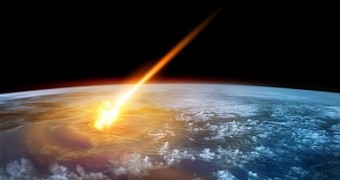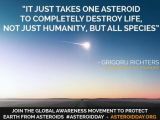Well over a century ago, on June 30, 1908, a celestial body that was probably either an asteroid or a comet exploded over Siberia with the force of about 3-5 megatons of TNT and destroyed an astounding 2,000 square kilometers (over 770 square miles) of forest.
Just to put things into perspective, it must be said that the meteor that exploded over Russia's Chelyabinsk region in February 2013 released the energy equivalent of about 460 kilotons of TNT.
Hence, the 1908 explosion that flattened forests adjacent to Russia's Podkamennaya Tunguska river holds the title for the absolute largest and most powerful impact event on our planet in recorded history.
As devastating as it turned out to be, the fact of the matter is that the blast could have caused way more damage than it did. Had the unidentified orb hit Earth about 6 hours later than it did, the planet's rotation around its axis would have put the city of Berlin in Germany right in its path.
It's up to us to make sure this never happens again
Looking to raise awareness of the threats that orbs gone haywire pose to our otherwise peaceful existence here on Earth, astronauts and astronomers have made June 30 the official Asteroid Day.
This global movement, which will be celebrated for the first time this year, also aims to raise funds needed to better monitor near-Earth objects and identify those that we should worry about.
“Asteroid Day is a global awareness campaign where people from around the world come together to learn about asteroids and what we can do to protect our planet, families, communities, and future generations from future asteroid impacts,” the event's organizers say.
Whatever cash is raised during this year's Asteroid Day will go towards launching the B612 Foundation's Sentinel telescope, an orbiting observatory that is now still under development and that should be completed sometime in 2017, maybe 2018 at the latest.
Once this satellite takes to the skies, researchers expect that they will be able to identify and track around 100,000 asteroids per year. The goal is to spot those that might turn out to be a threat to us.
“In addition to protecting our planet, this increased capability will provide dramatically improved knowledge of our Solar System for scientific and other purposes,” the astronauts and astronomers behind Asteroid Day explain.
Among the supporters of Asteroid Day are Apollo 9 astronaut Rusty Schweickart, Queen guitarist and astrophysicist Brian May, Nobel laureate Sir Harold Kroto, and theoretical physicist Kip Thorpe.
Just how big a threat are asteroids and meteors?
Admittedly, it's not all that often that orbs big enough to bring about a global catastrophe hit our planet. Au contraire, scientists estimate that such impacts only happen once every 10 million years or so.
Smaller celestial bodies, however, are not such a rare sight. In fact, it looks like the chances of having our planet being hit by an asteroid in our lifetime are roughly the same as our chances of dying in a car crash. Pretty scary, right?
Although unlikely to end life here on our planet, such smaller orbs that scientists are especially worried about can nonetheless trigger devastating events such as earthquakes and tsunamis.

 14 DAY TRIAL //
14 DAY TRIAL // 

